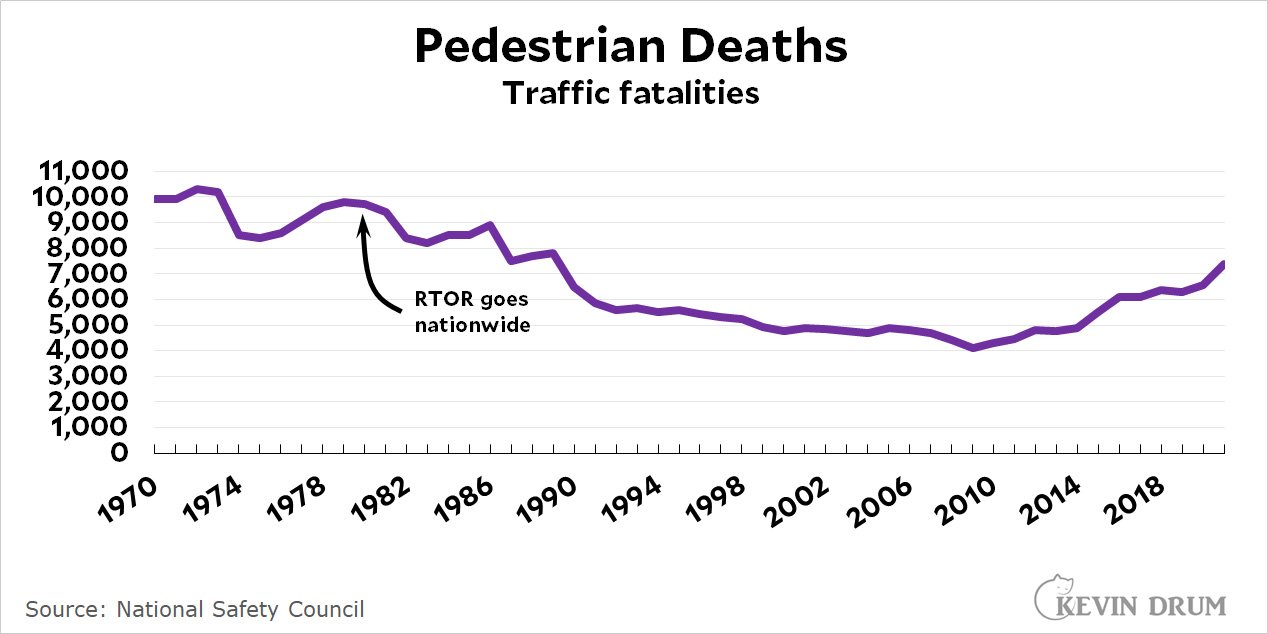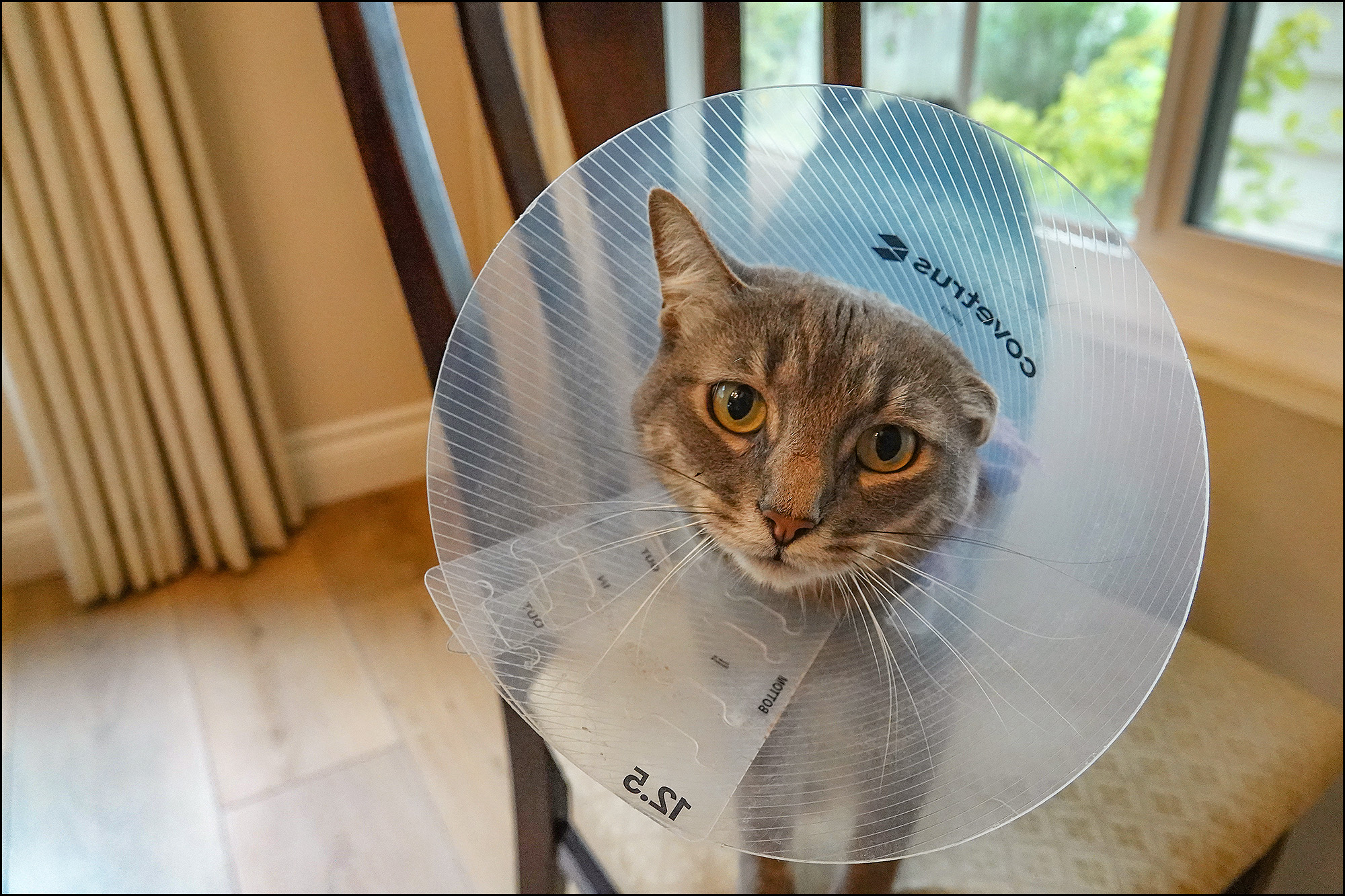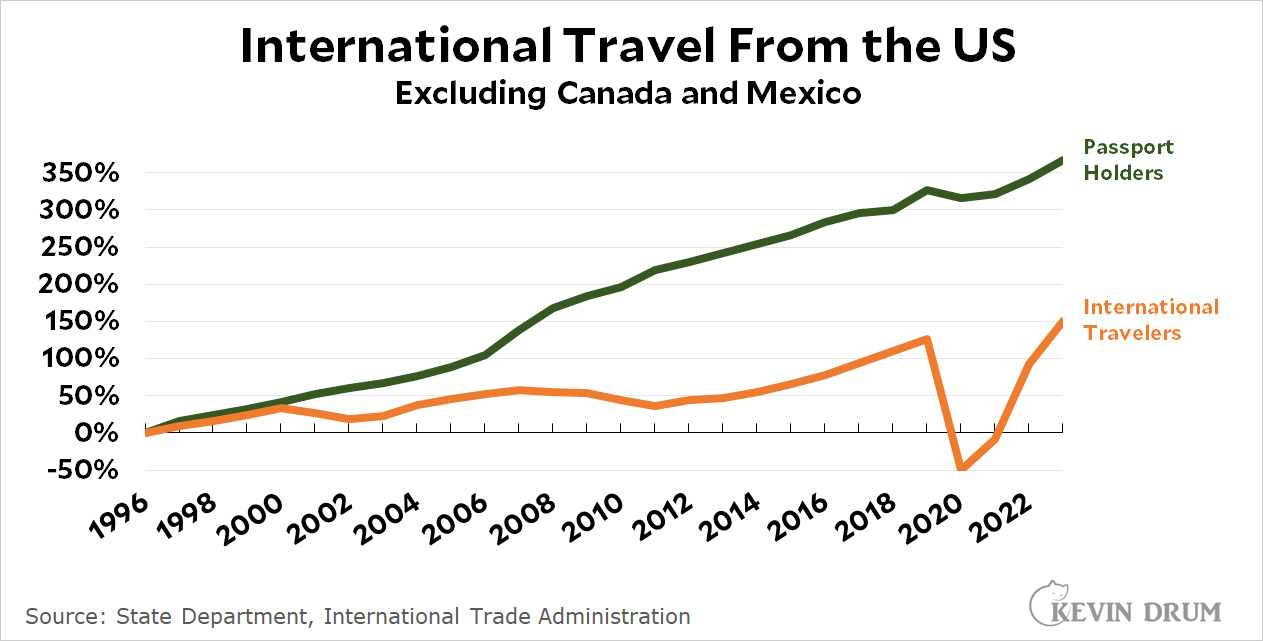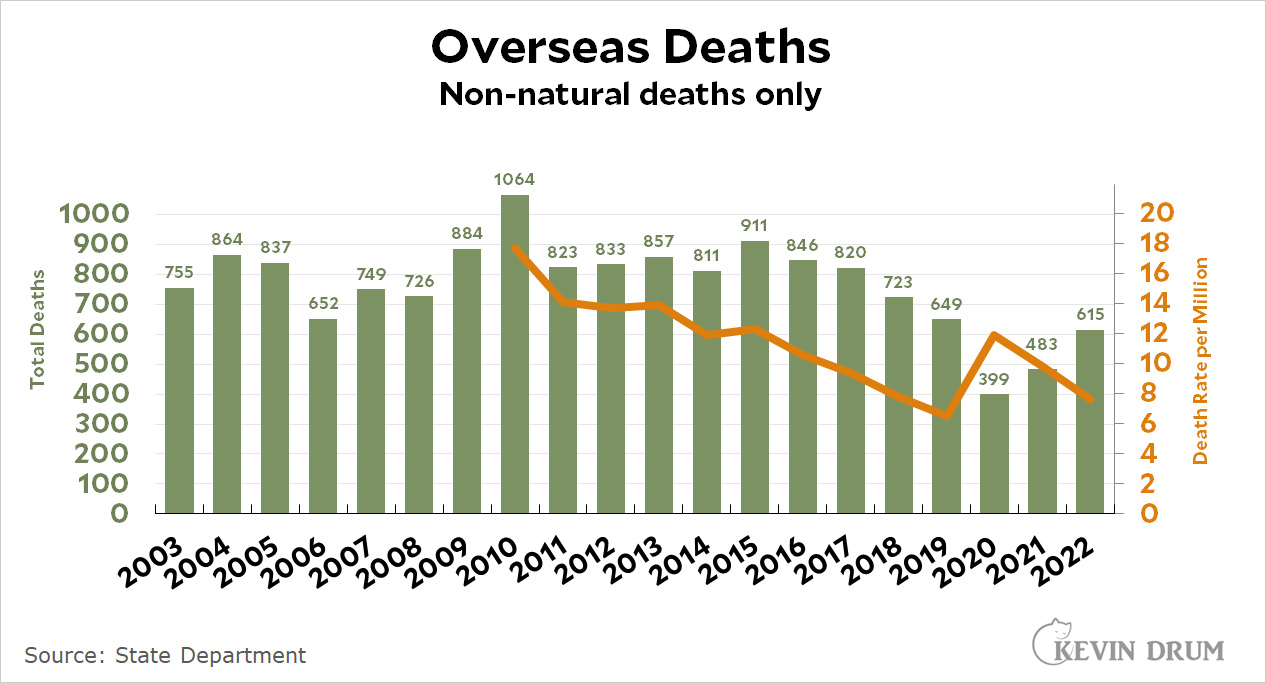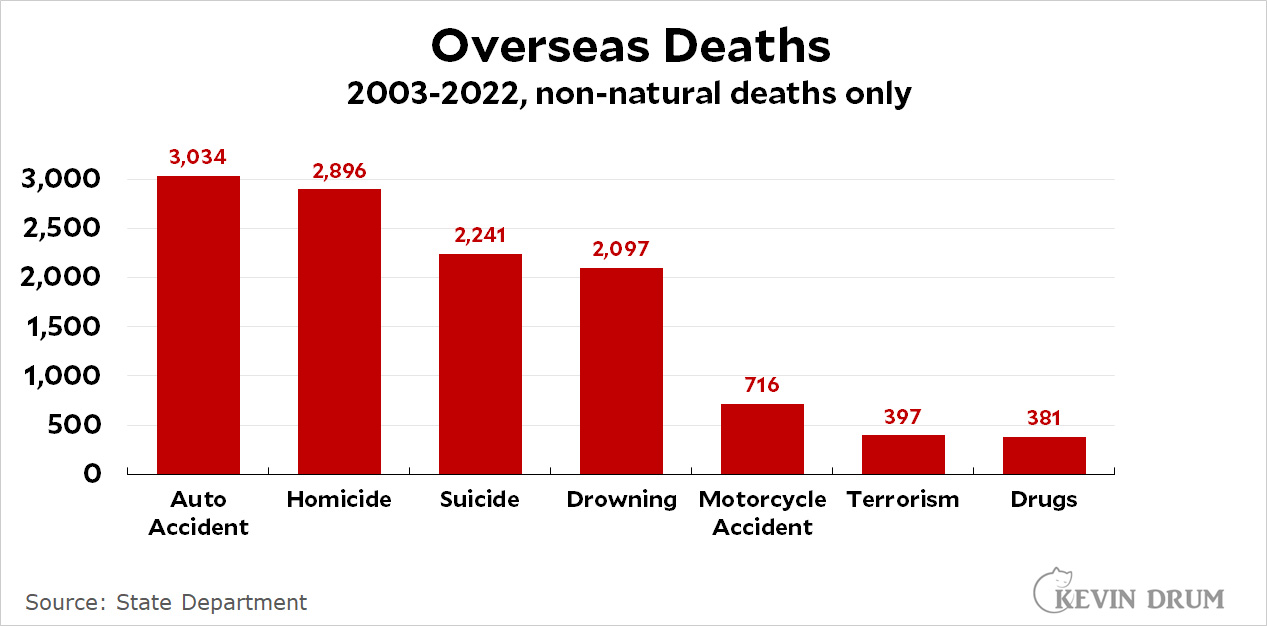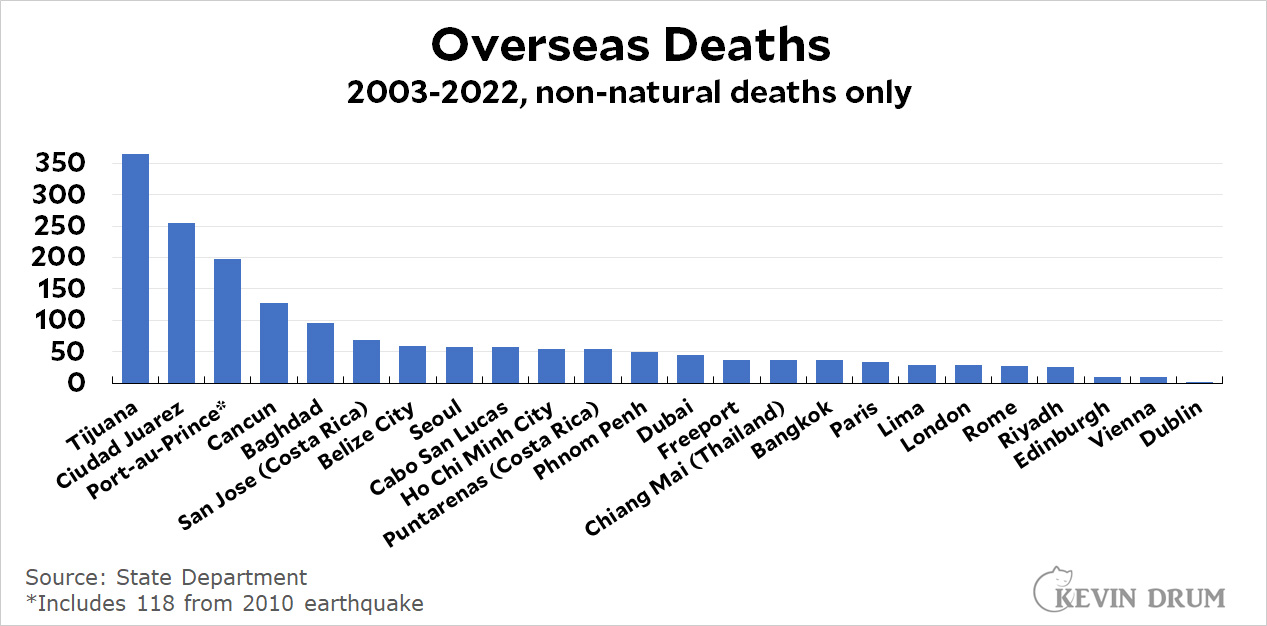Unlike the photos, I had no problem finding ten interesting charts. In fact, I found 20. So at the risk of taking a good thing too far, here are the top 20 most interesting charts of 2023.
By the way: by "interesting," I mostly mean "something you might find surprising."
1. The cost of college hasn't gone up much
The list price of a college education has skyrocketed, as everyone knows. But it turns out that universities discount heavily, which means that the actual cost of tuition has risen only slightly over the past 30 years.
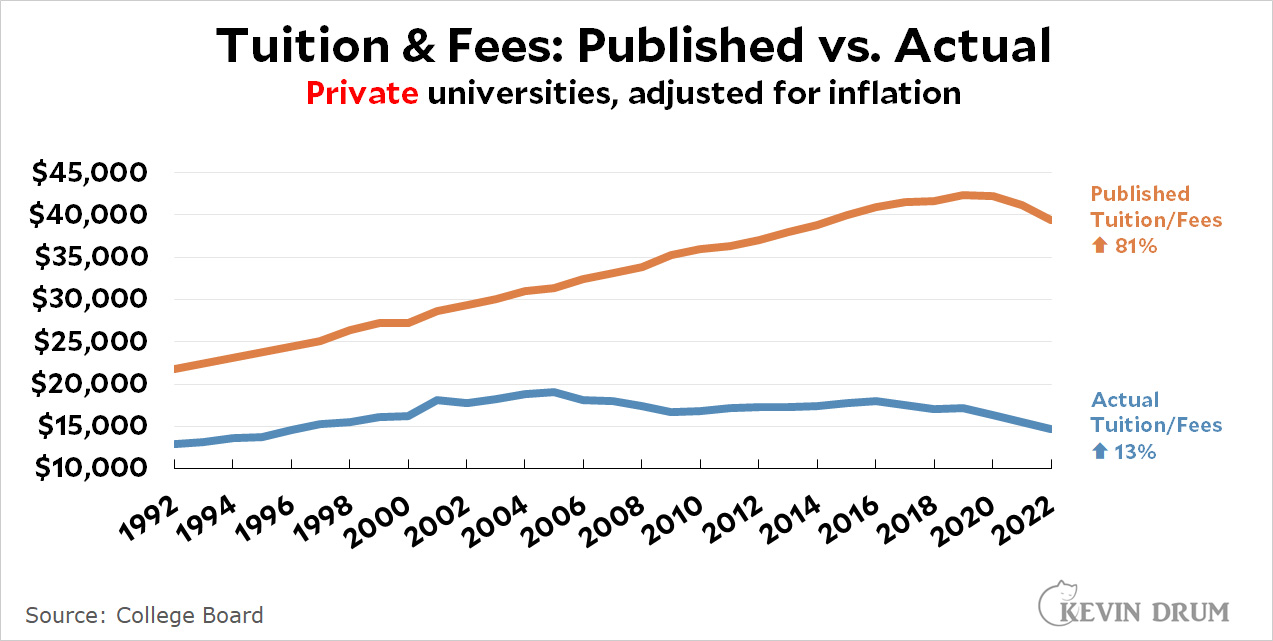 2. Remote teaching didn't cause learning losses during COVID
2. Remote teaching didn't cause learning losses during COVID
Test scores for American kids dropped precipitously following the COVID pandemic. But it turns out that remote teaching had little or nothing to do with it: scores dropped almost identically in states that shut schools (right side of chart) vs. those that kept them open (left side). The same thing turns out to be true internationally.
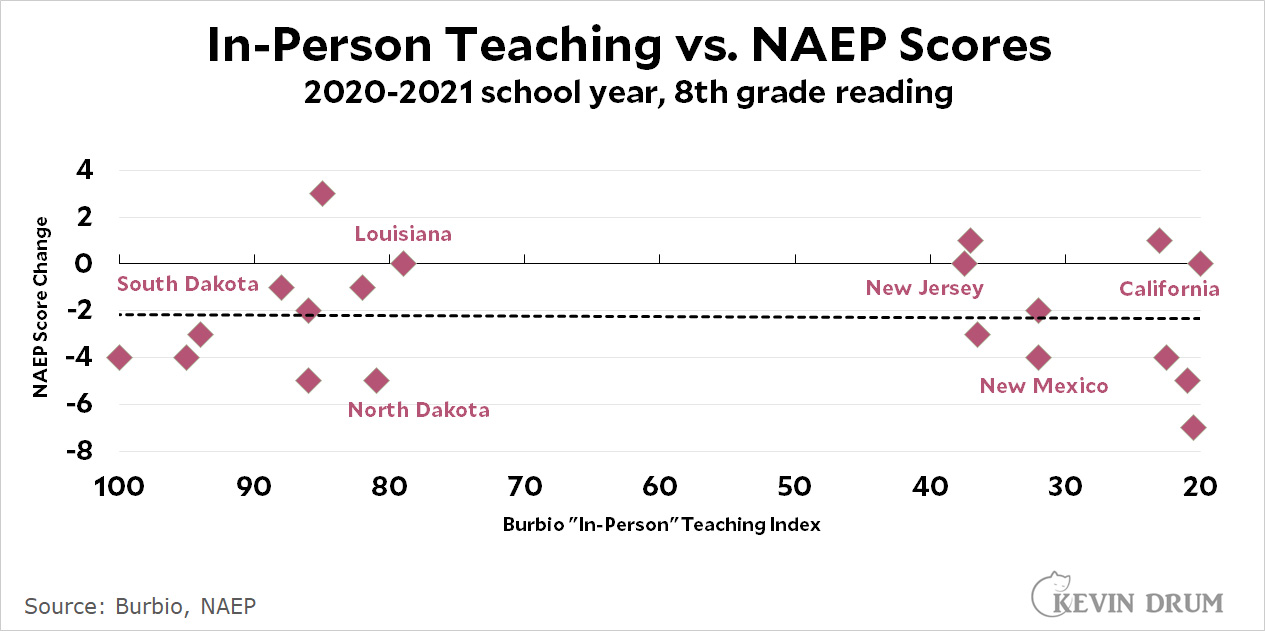 3. Crime didn't go up during the pandemic
3. Crime didn't go up during the pandemic
Now that more data is available, we can say pretty conclusively that both property crime and violent crime were either flat or down during the pandemic. However, murder spiked considerably. This is a big mystery since murder rates usually follow violent crime rates pretty closely. As far as I know, nobody has come up with a good theory to explain this.
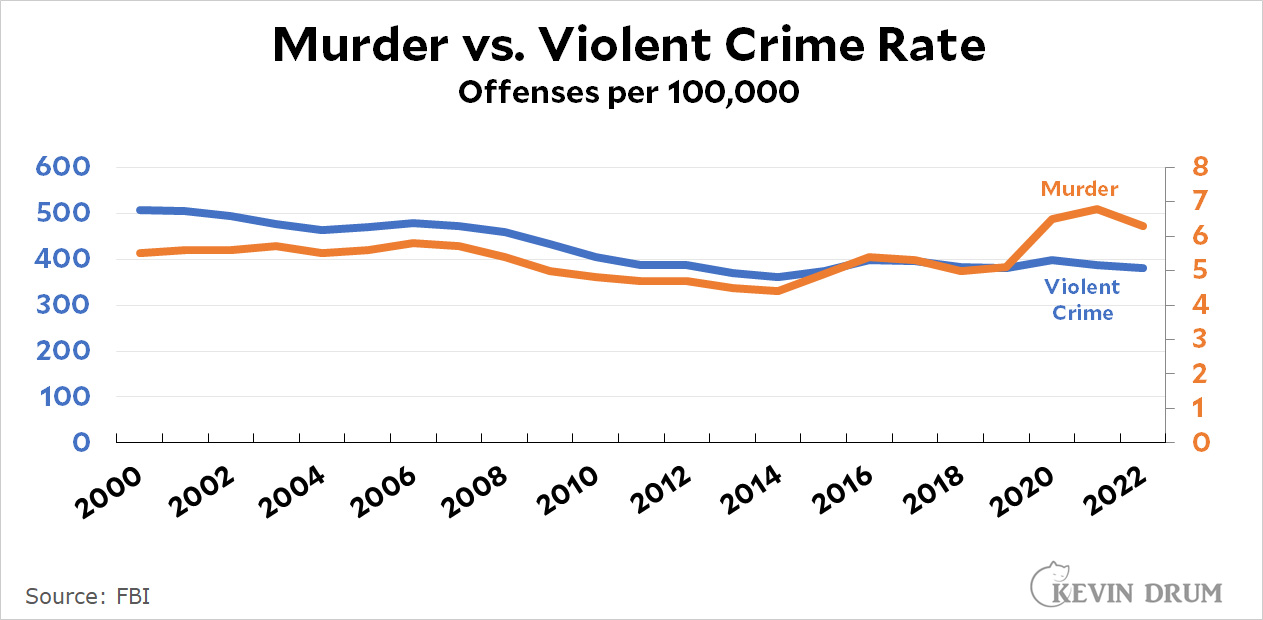 4. Washington DC has a lead problem
4. Washington DC has a lead problem
Speaking of murder, Washington DC has had an unusually large murder spike and an increase in violent crime, and it started before COVID. Why? My guess is that it's because they had a big problem with lead in their drinking water in 2000-04. Twenty years later all these lead poisoned kids have pushed up the crime rate.
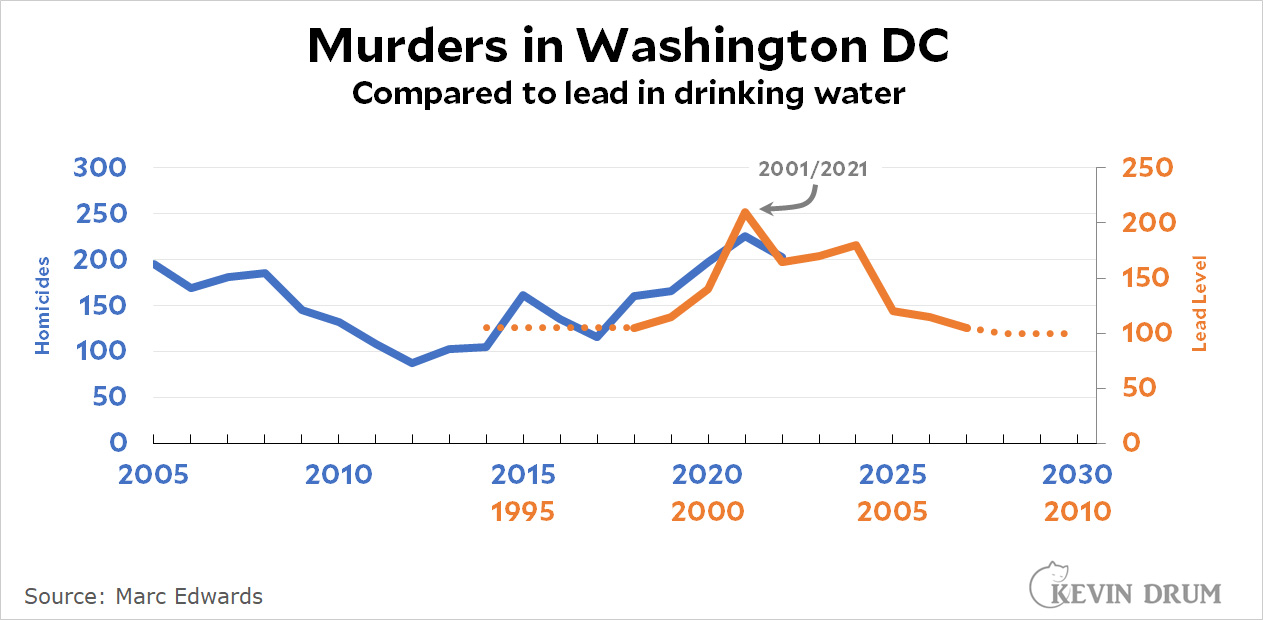 5. Drone strikes are over
5. Drone strikes are over
Did you know that Joe Biden has effectively ended drone strikes in the Middle East, the ones that kept killing dozens of innocent civilians? He has.
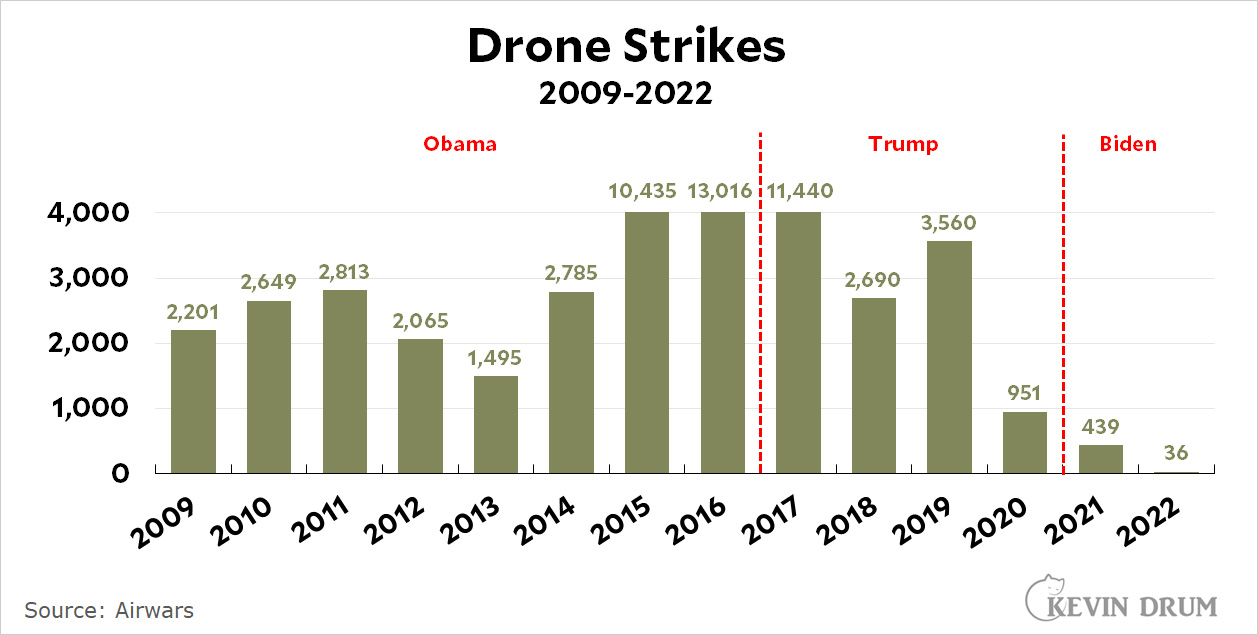 6. Kids are pretty safe these days
6. Kids are pretty safe these days
Declines in teen mental health are everywhere in the news these days, but whatever the cause it's not their actual safety. Every indicator of teen safety, from poverty to sexual assault to bullying to drug use to suicide attempts has been flat or down over the past couple of decades. The current generation of kids is in the best objective shape of any generation ever. It remains a mystery why they feel so anxious and depressed.
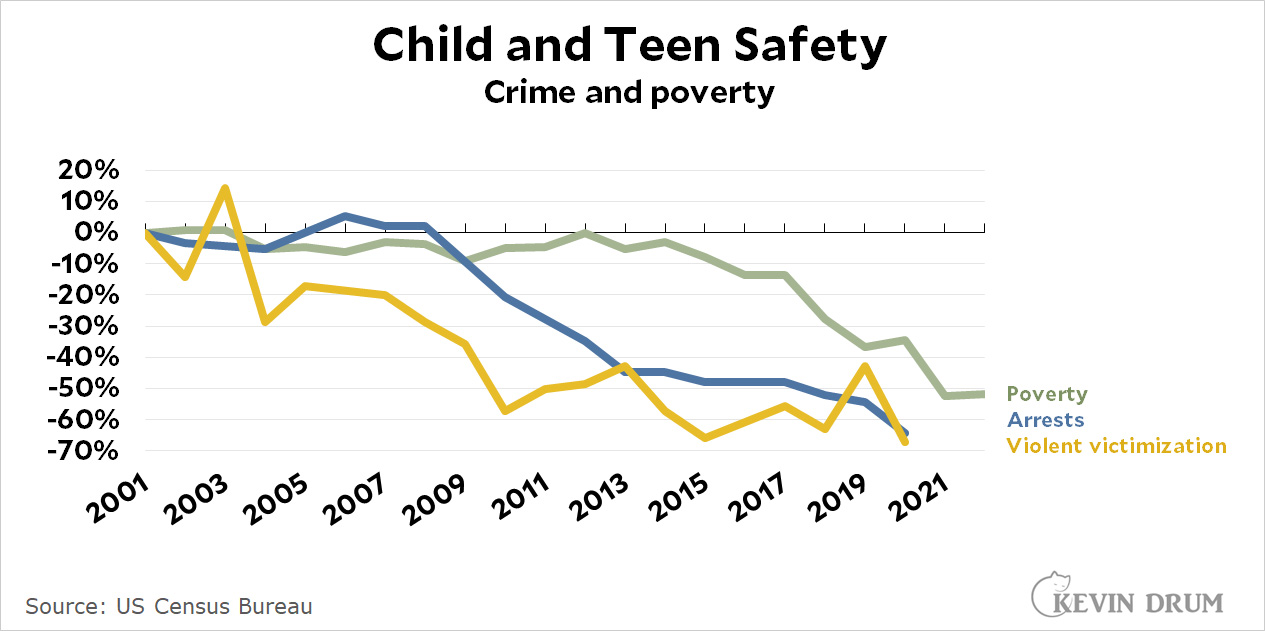 7. It's all in your genes
7. It's all in your genes
This shouldn't really be big news to anyone, but as more and more studies are completed it becomes clearer that a very large share of most cognitive traits is in our genes. For overall intelligence it's about 70%. Sleep disorders are 65% genetic. Memory is 45% inherited.
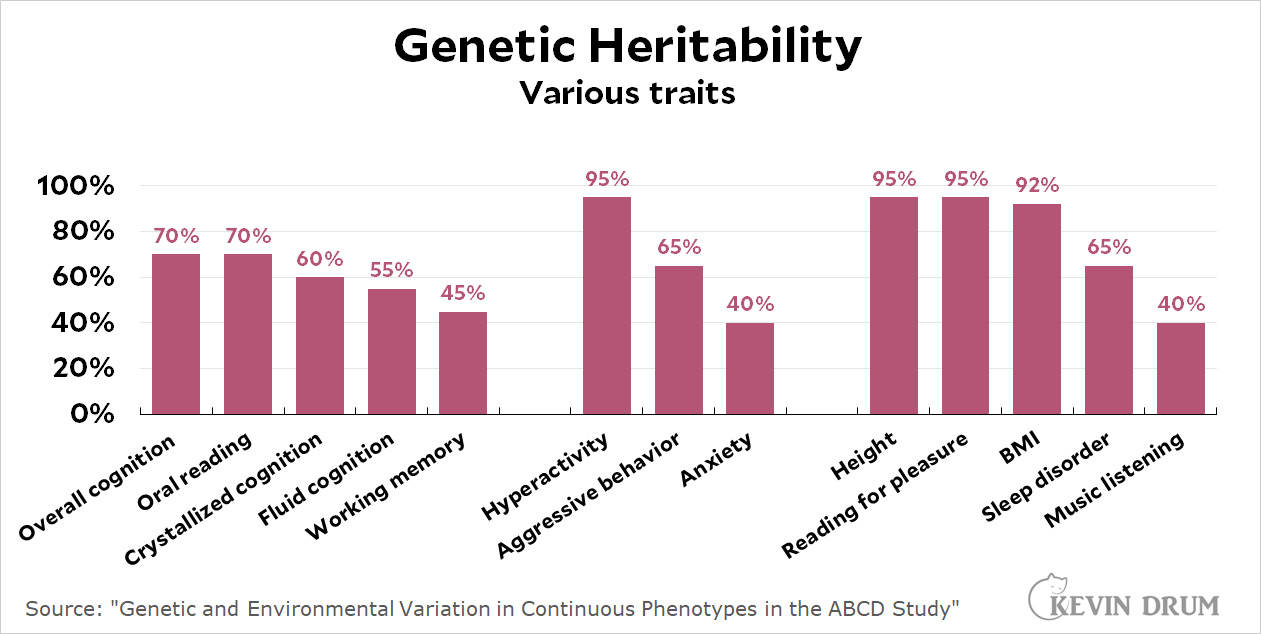 8. Inflation is over
8. Inflation is over
This chart, using the Fed's favored measure of inflation, is probably the clearest illustration of the fact that our inflationary spike of 2021-22 is well and truly over.
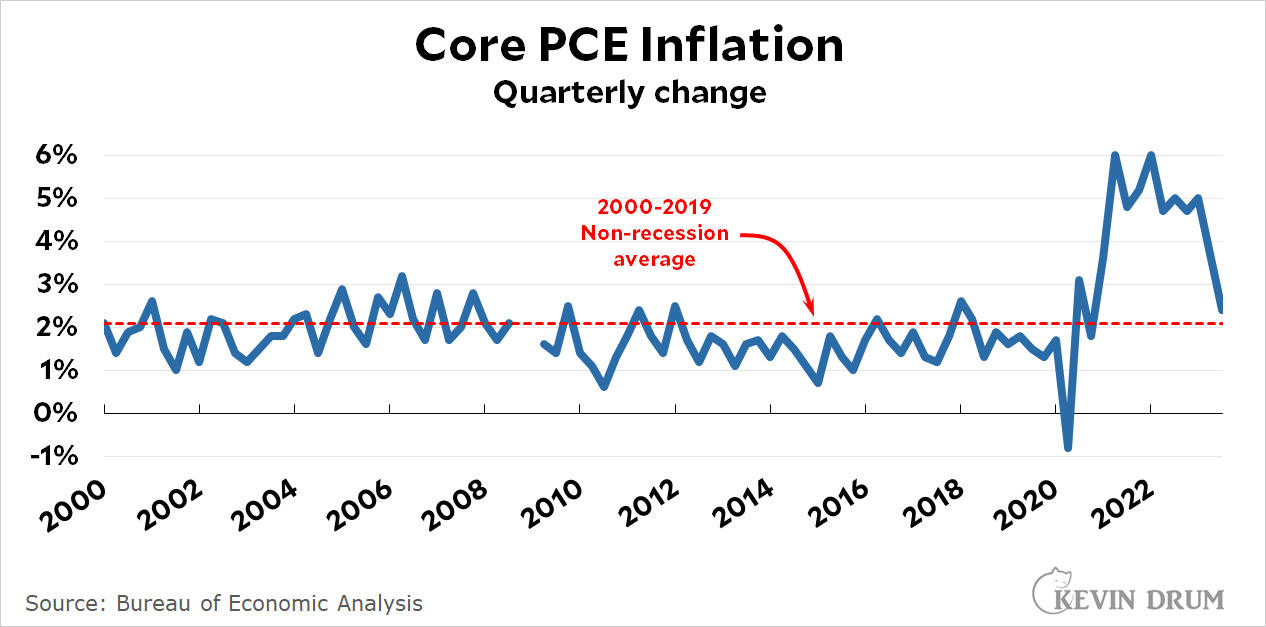 9. Americans don't think the economy sucks. Only Republicans do.
9. Americans don't think the economy sucks. Only Republicans do.
It's commonplace to stare into our navels these days and wonder why people are so sour on the economy even though the economy is pretty good. One reason is that inflation was high until very recently, and it takes a while for people to realize that it's over. But the main reason is simpler: Republicans, even though they're personally doing fine, refuse to admit that the economy under Joe Biden is good—which brings down the national average. This is due more to Fox News than to anything objectively wrong with the economy.
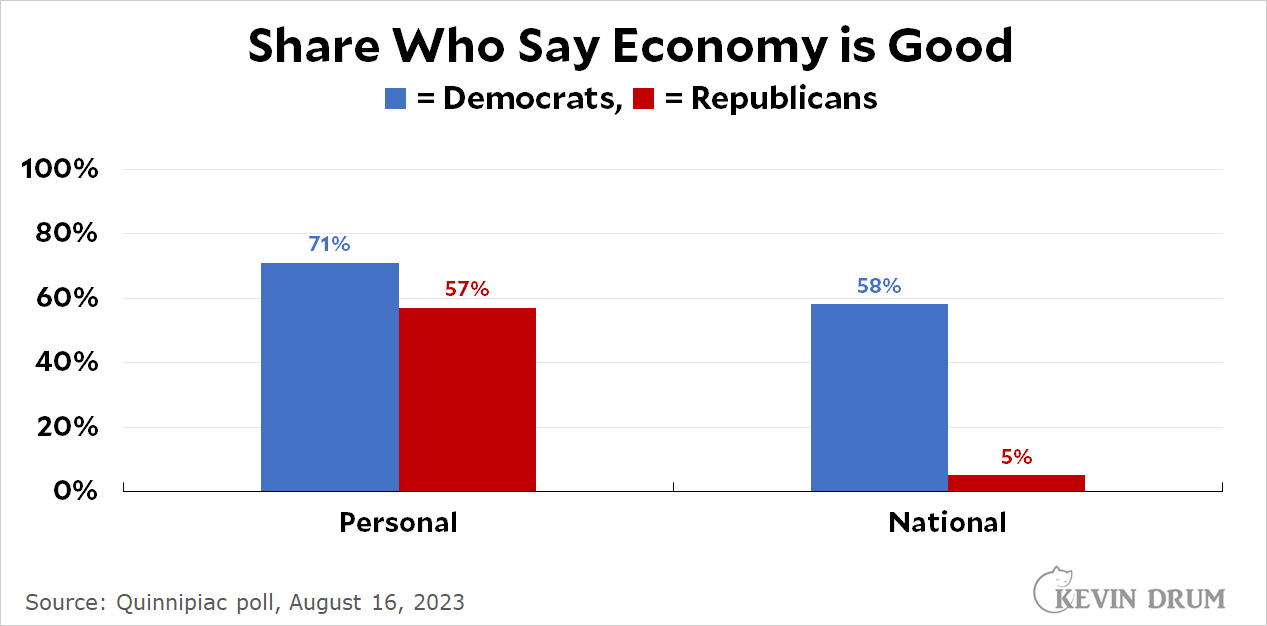 10. China is not having kids anymore
10. China is not having kids anymore
Outside of wartime, the plunge in Chinese fertility over the past five years is unprecedented.
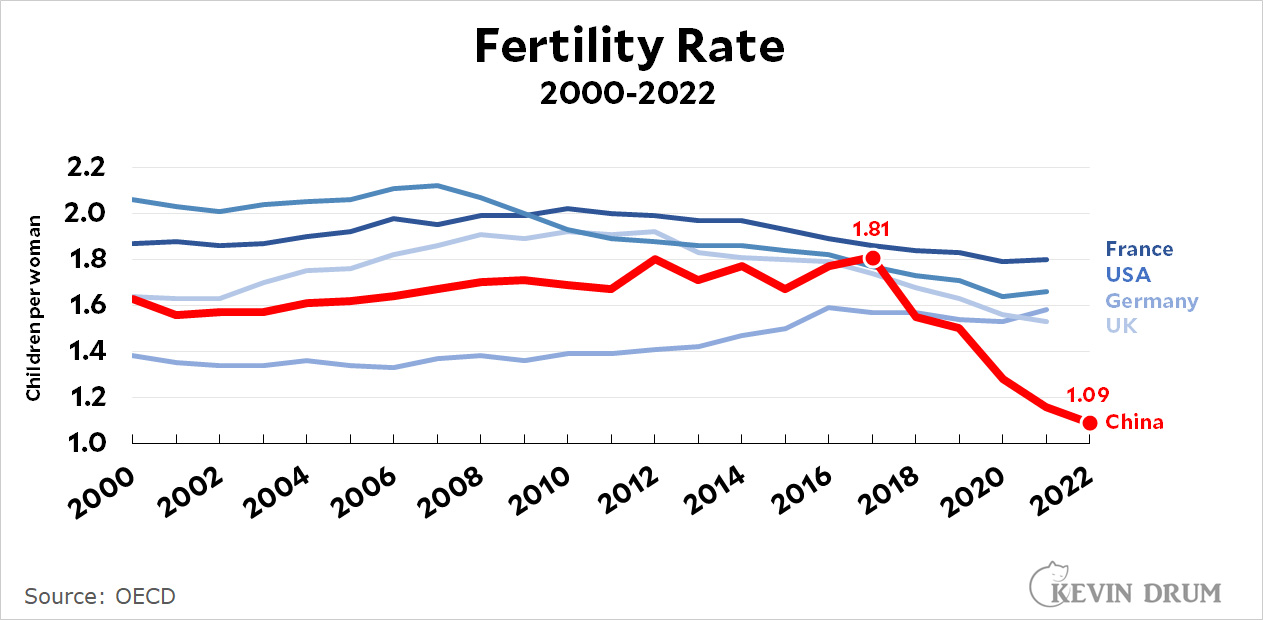 11. Shoplifting is the same as ever
11. Shoplifting is the same as ever
Media frenzies are hard to fight. If someone takes a cell phone video of a gang sweeping through a store and stealing stuff in broad daylight, and then that video gets played 24/7 along with a few others, it's really hard not to believe that organized shoplifting has become overwhelming. But it hasn't. It's a problem, bigger in some places than others, but it hasn't changed much over the past decade or two. In fact, it's probably down compared to before the pandemic.
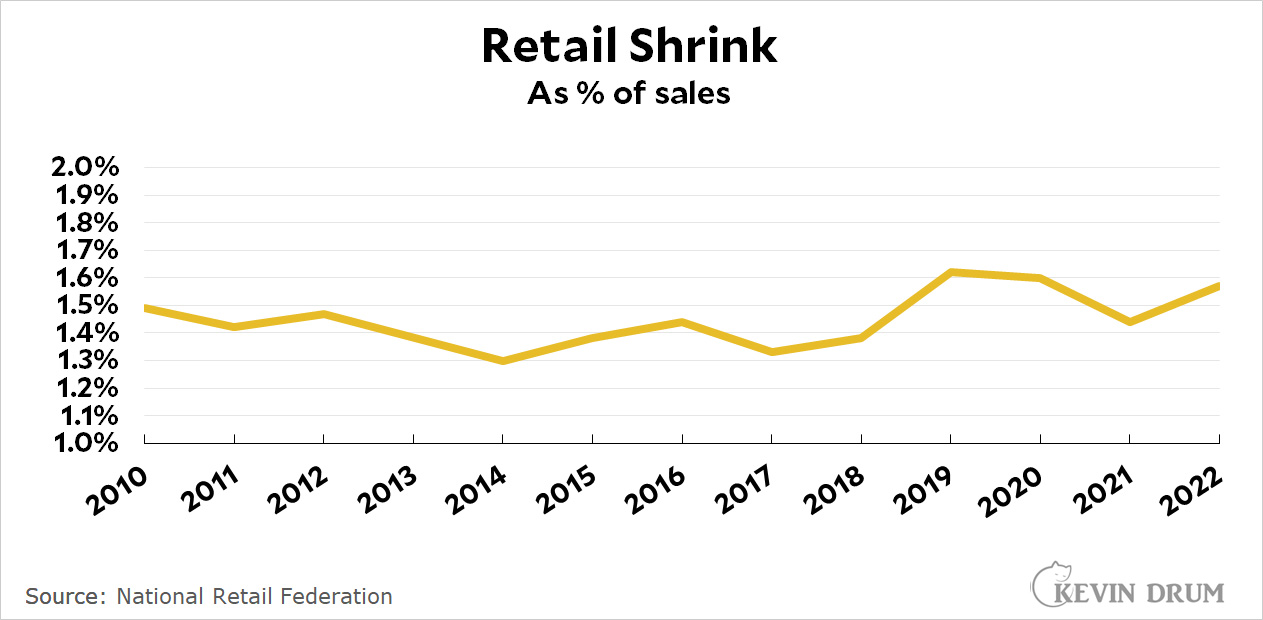 12. Republicans are crooks
12. Republicans are crooks
Maybe this is just a coincidence. You be the judge.
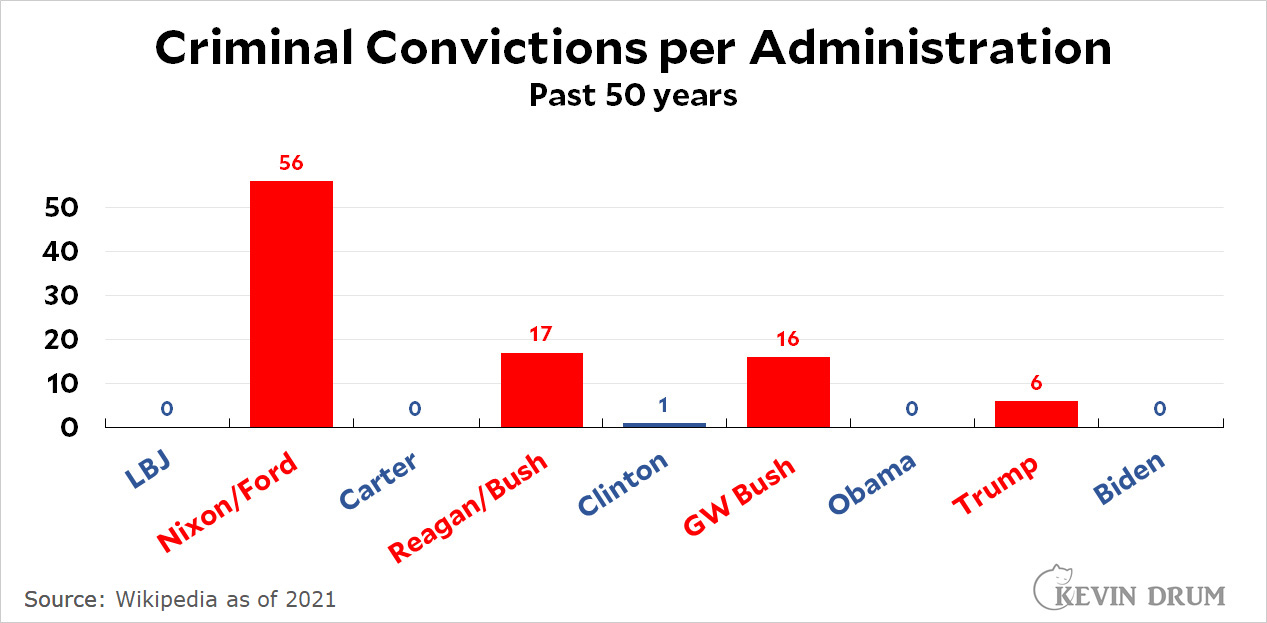 13. We really hate each other
13. We really hate each other
This chart also made my 2022 list, but it's important! It shows how much we hate members of the opposite party, and it's skyrocketed since 1994. That happens to be when Newt Gingrich became Speaker, followed shortly by the start of Fox News. This is not likely to be a coincidence.
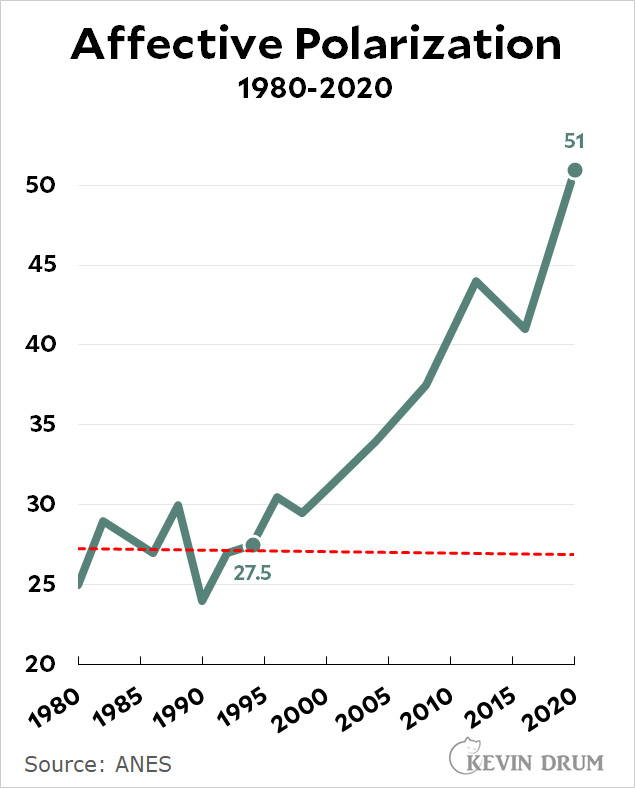 14. Maternal mortality has skyrocketed
14. Maternal mortality has skyrocketed
Maternal mortality in the US has always been high, and it's especially high for Black mothers. But over the past couple of years it's exploded. It's now twice as high as it was in 2018. The racial difference remains a mystery despite a fair amount of recent study, and the skyrocketing incidence of the past few years is a double mystery.
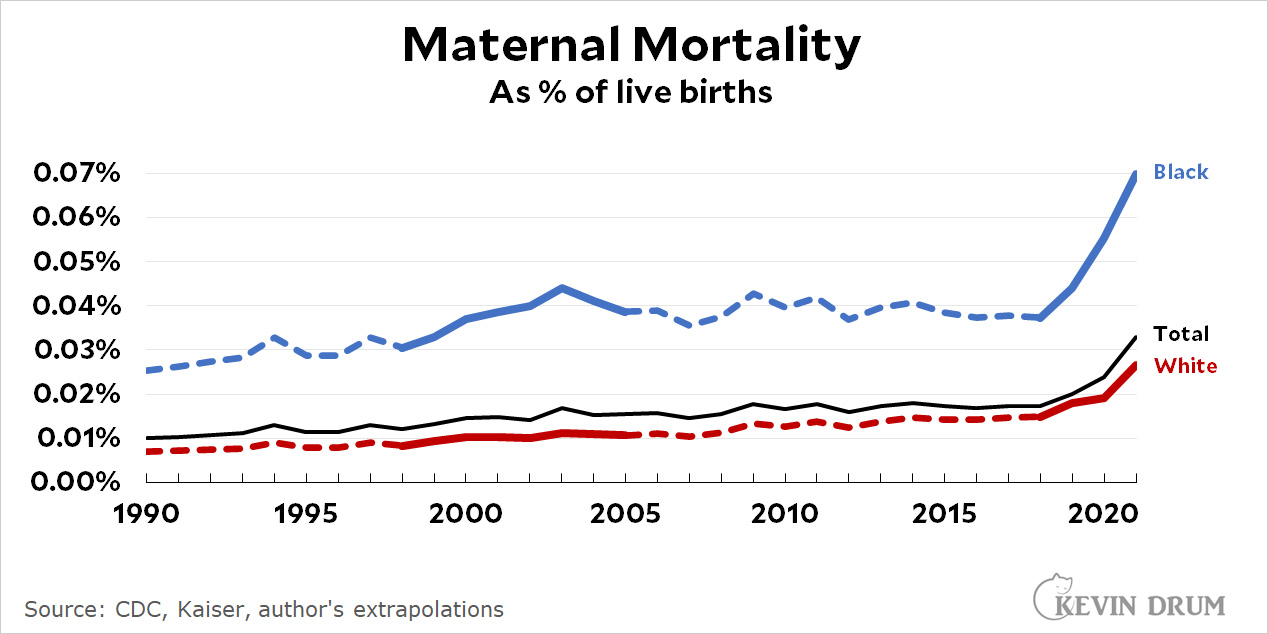 15. Men are still going to college
15. Men are still going to college
It has become conventional wisdom that there's a crisis among young men. Exhibit A is the fact that women significantly outnumber them at universities these days. And that's true. But it's not because fewer men are going to college. They're still attending at the same rate as always. The only thing that's changed is that more women are going to college. Generally speaking, the whole "crisis among men" thing has been substantially overblown.
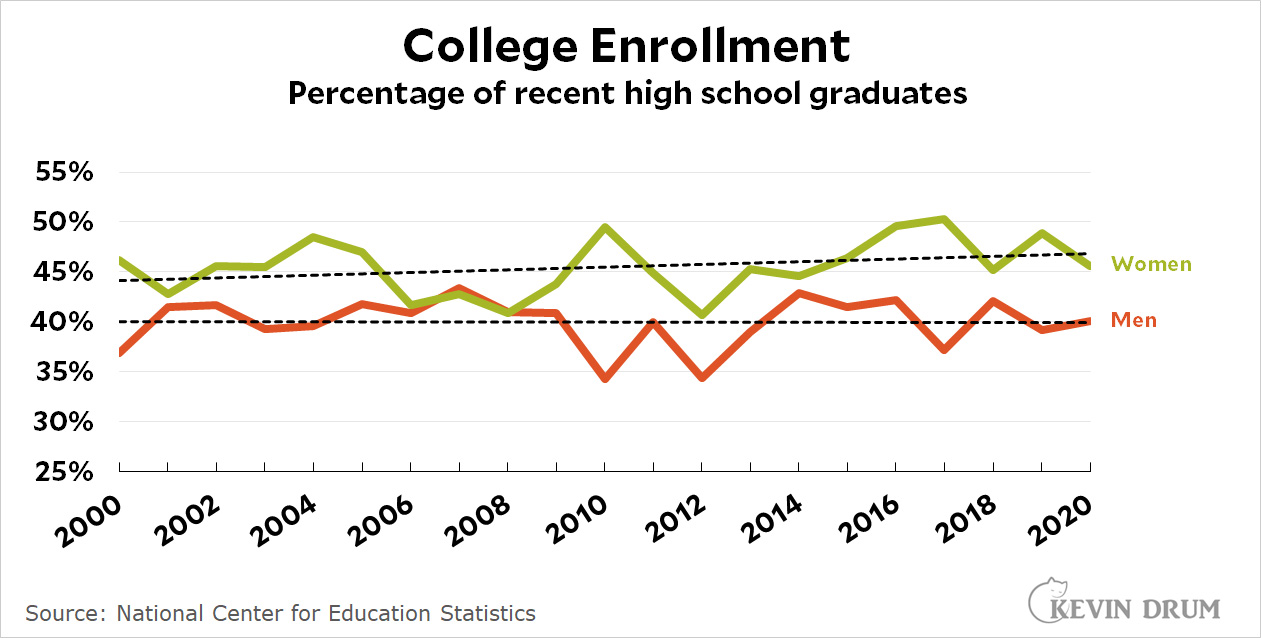 16. Government spending is not out of control
16. Government spending is not out of control
Congressional fighting over the budget is all about discretionary spending. This is the spending that has to be approved every year, unlike, say, Social Security, which just gets paid out automatically to everyone who qualifies. But for all the kvetching, discretionary spending over the past 20 years is down for both defense and domestic appropriation. Adjusted for inflation and population, non-defense spending is down 20% since 2005.
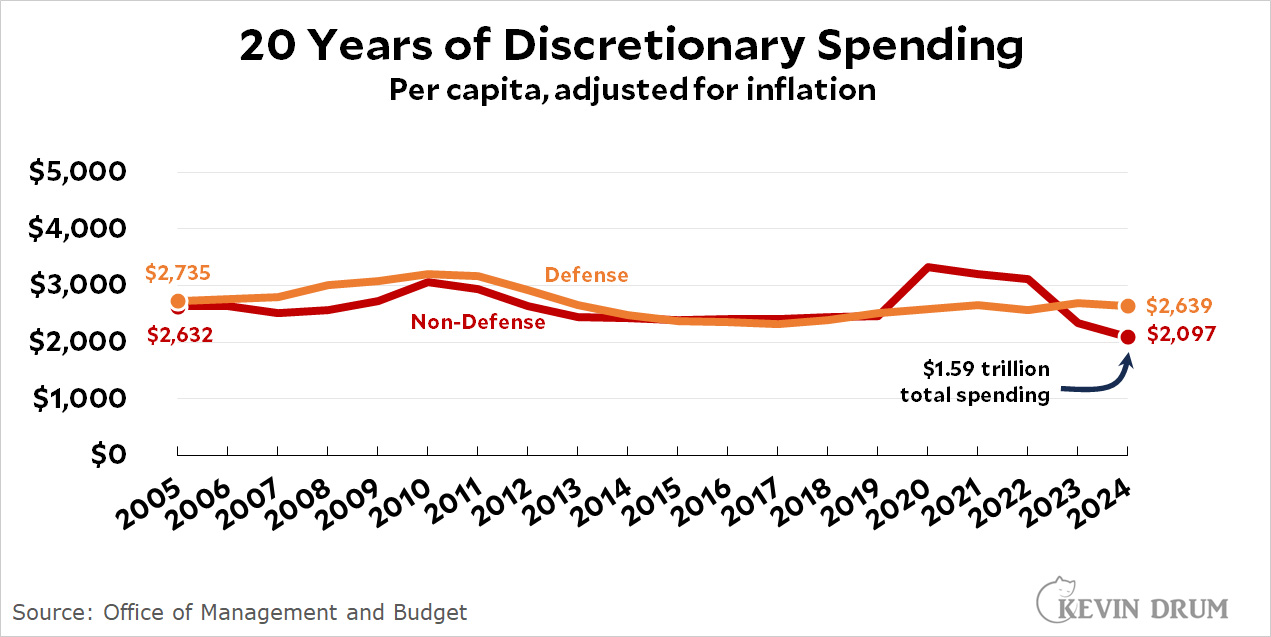 17. AIs are good doctors
17. AIs are good doctors
In a simple study, doctors themselves compared diagnoses from an AI to those from physicians. Even doctors agreed that the AI diagnoses were both better and more empathetic.
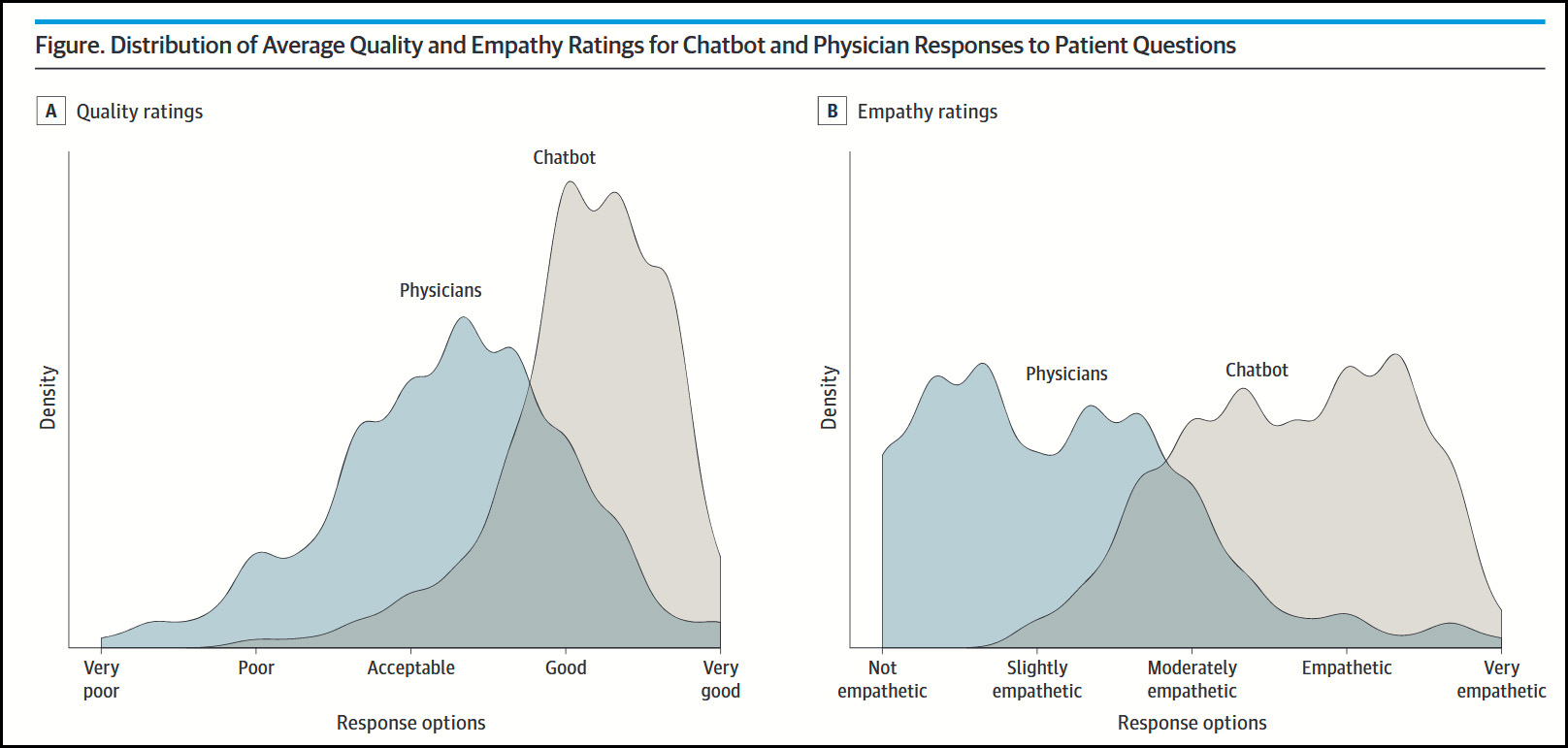 18. Skyscrapers are empty, but commuting continues apace
18. Skyscrapers are empty, but commuting continues apace
There is abundant evidence that downtown office buildings have emptied out as more people are working from home. But commuting to downtown hasn't gone down. This is a mystery.
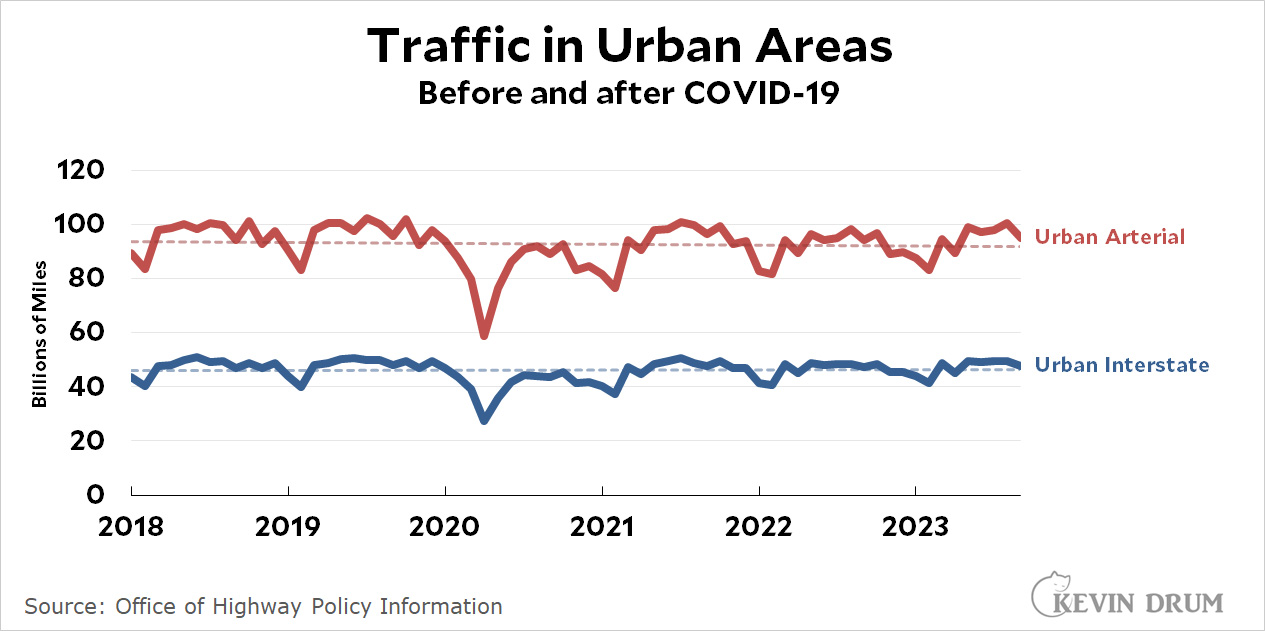 19. Abortion is up since Dobbs
19. Abortion is up since Dobbs
It's early days and reliable numbers aren't really available yet, but it appears that the abortion rate in the US is up since the Dobbs decision was released. Basically, abortions went down in red states that banned it, but went up in blue states because that's where women escaped to in order to get abortions. And while we're busting abortion myths, it's not really true that people got more pro-abortion after Dobbs.
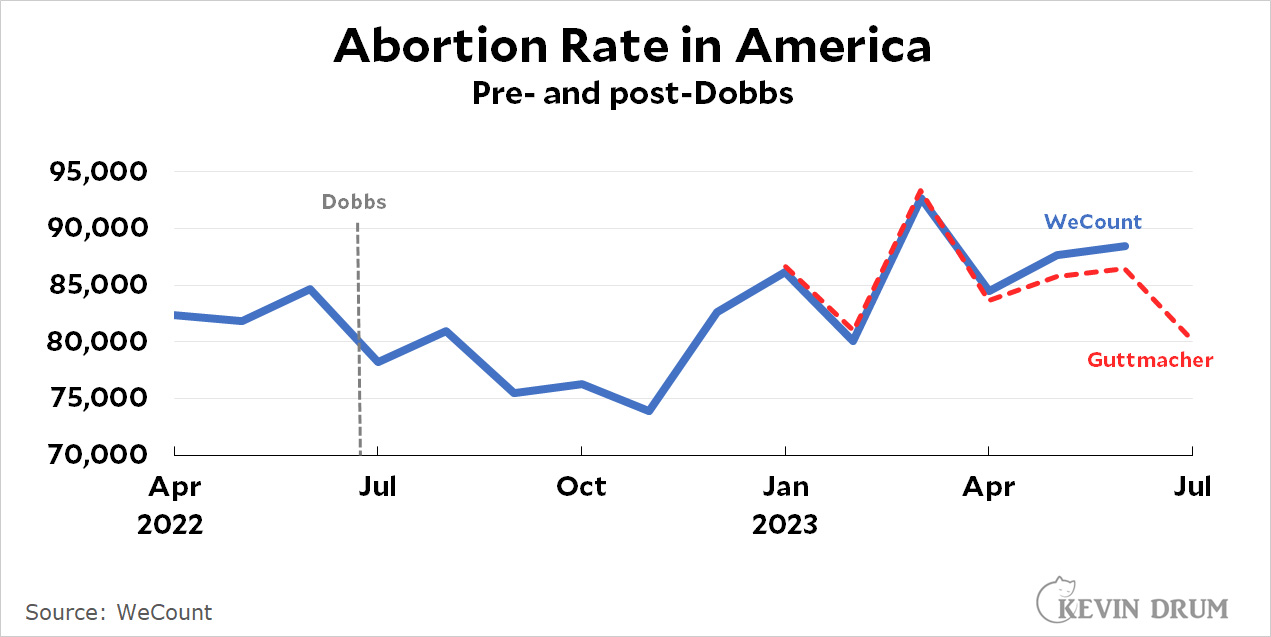 20. This was not a huge year for labor
20. This was not a huge year for labor
Because of the big UAW strike, there's been a sense on the left that this was a big year for labor. But not really. If you look at total strike days, it's all about the actors. Without the actors strike, total workdays on strike was no higher than last year.

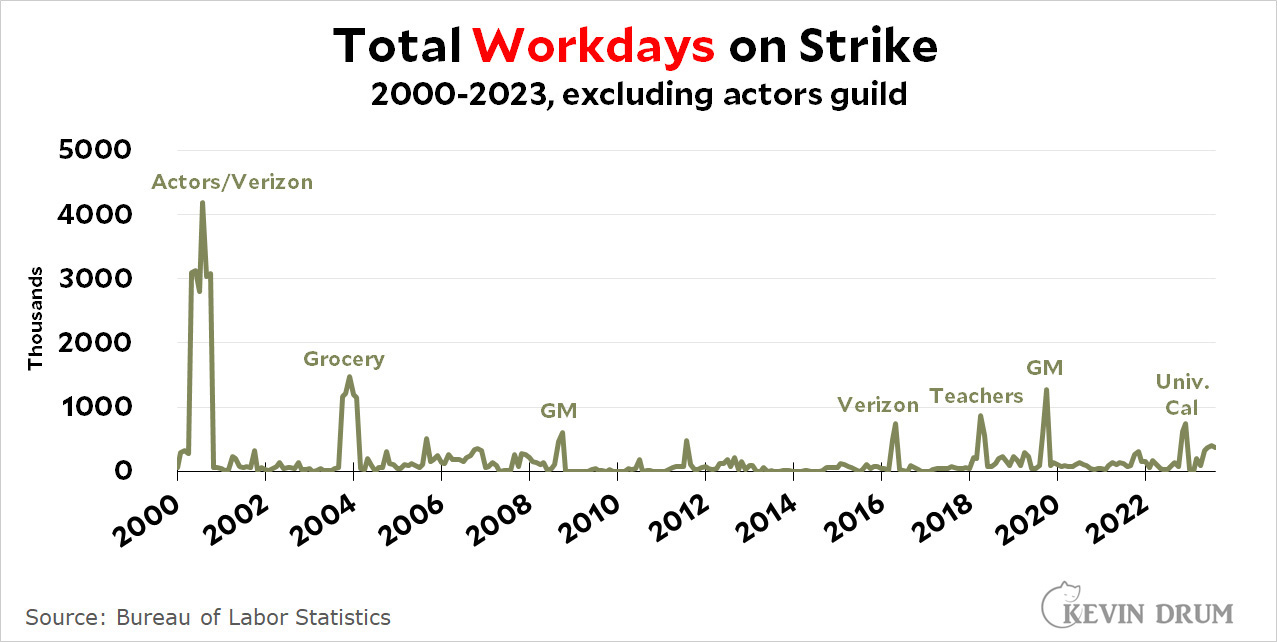



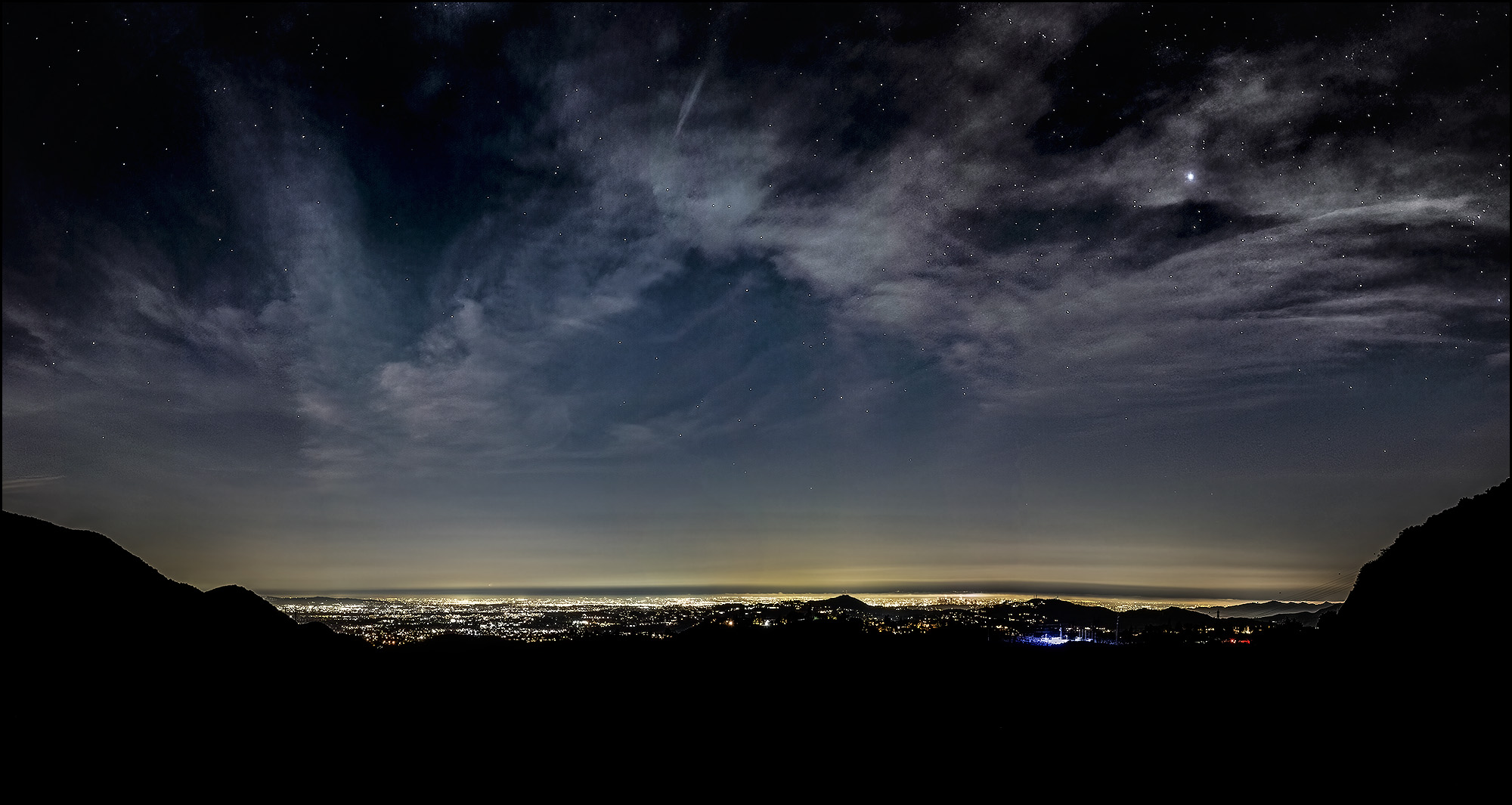
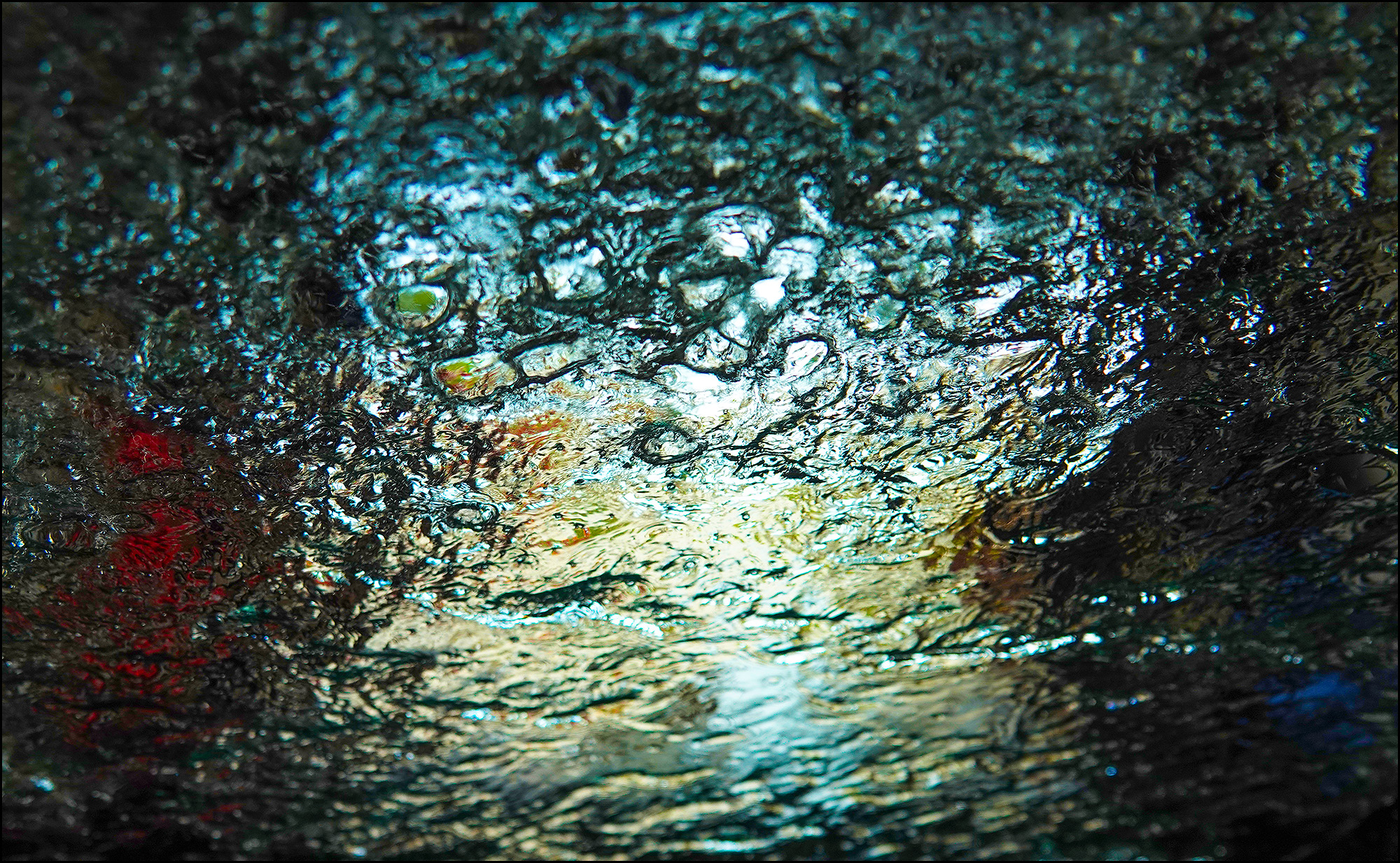
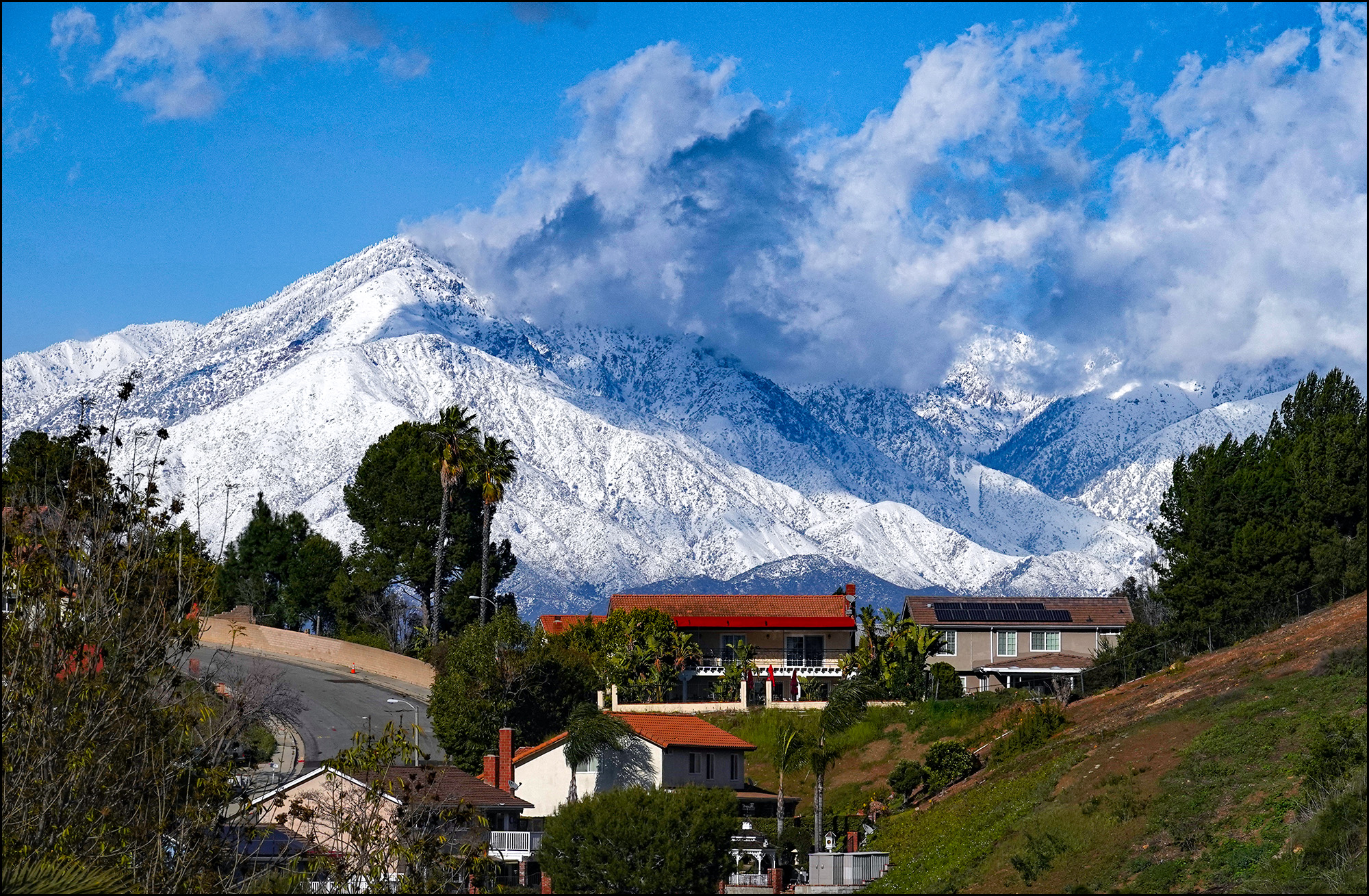
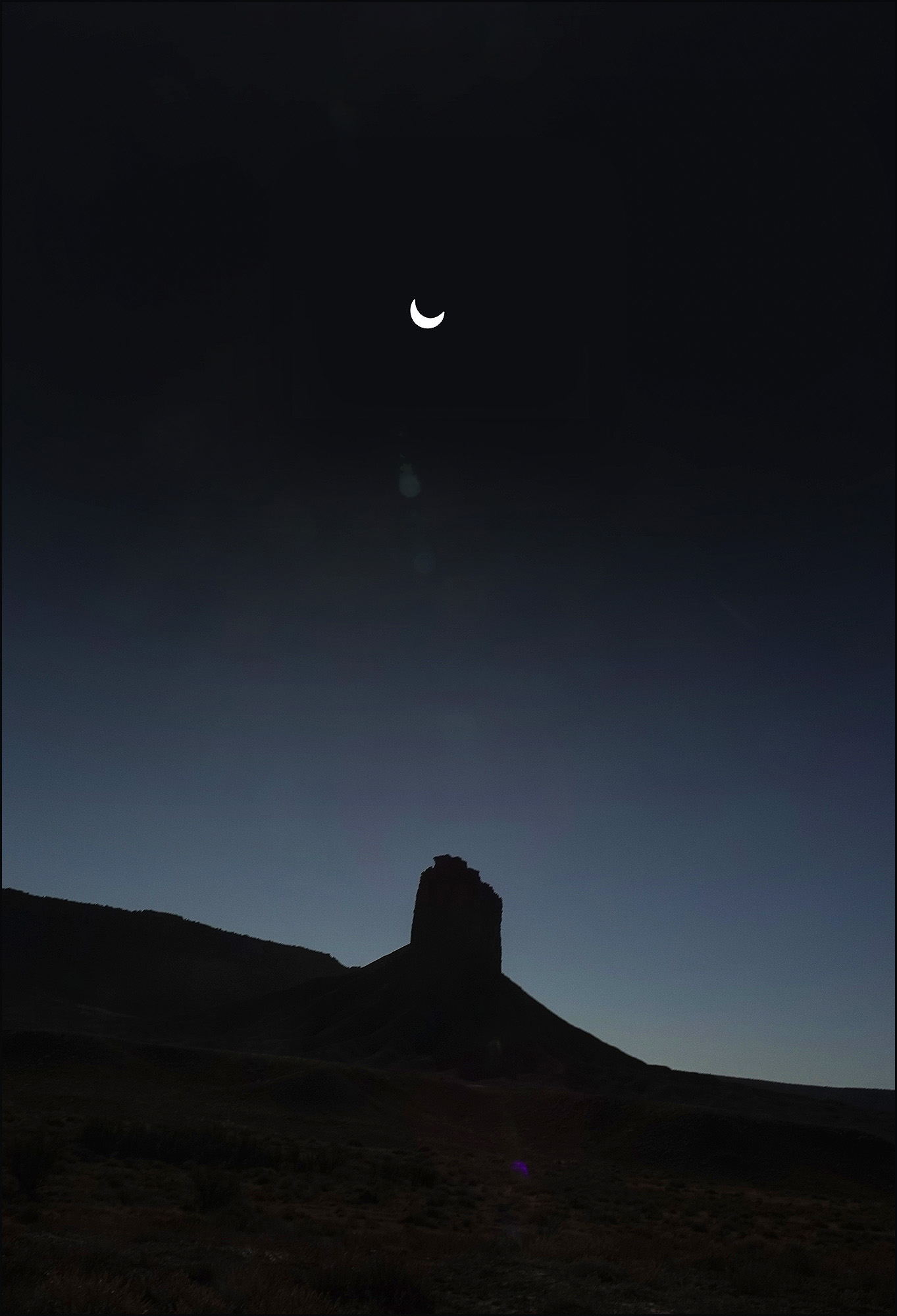
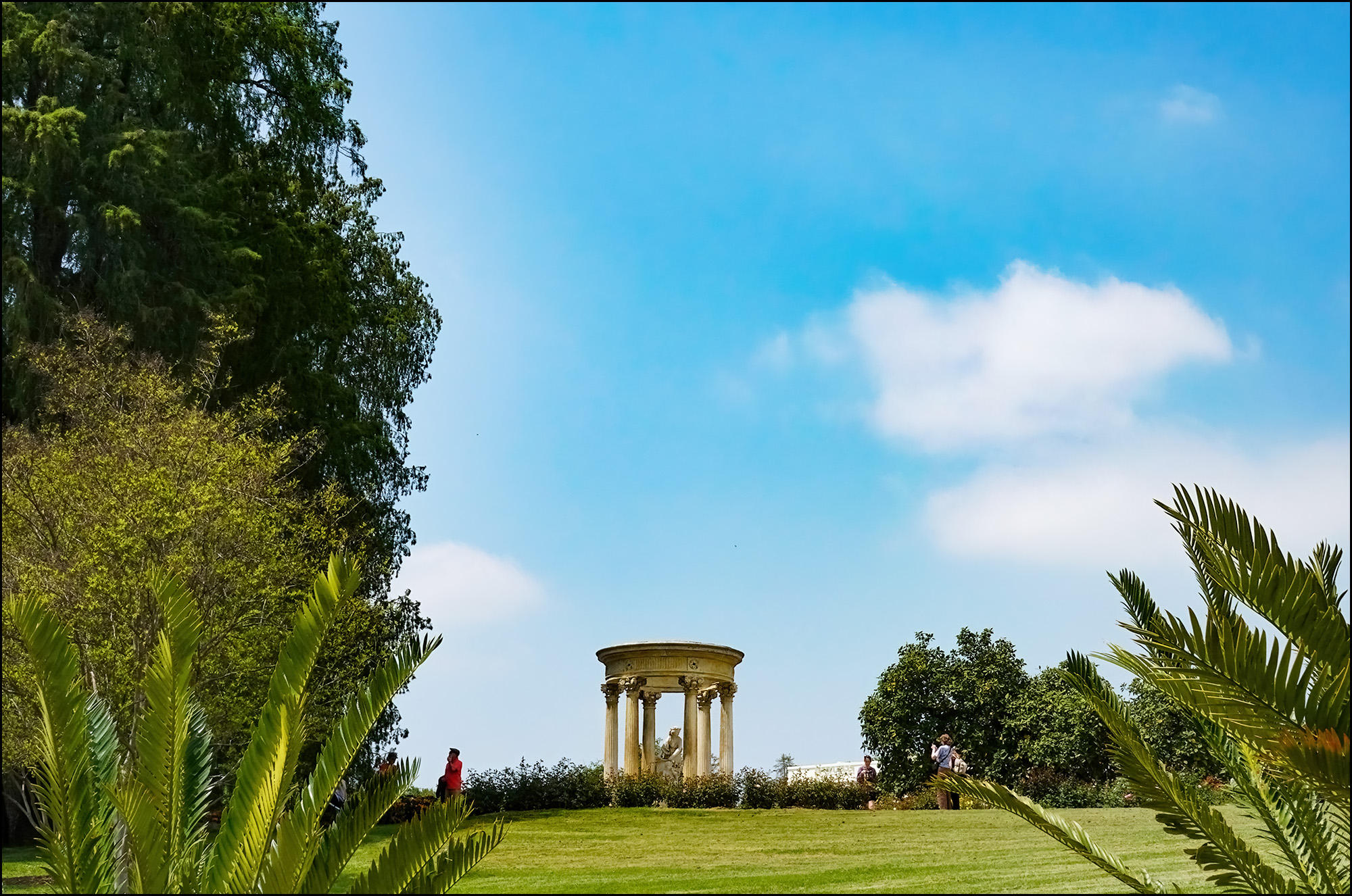
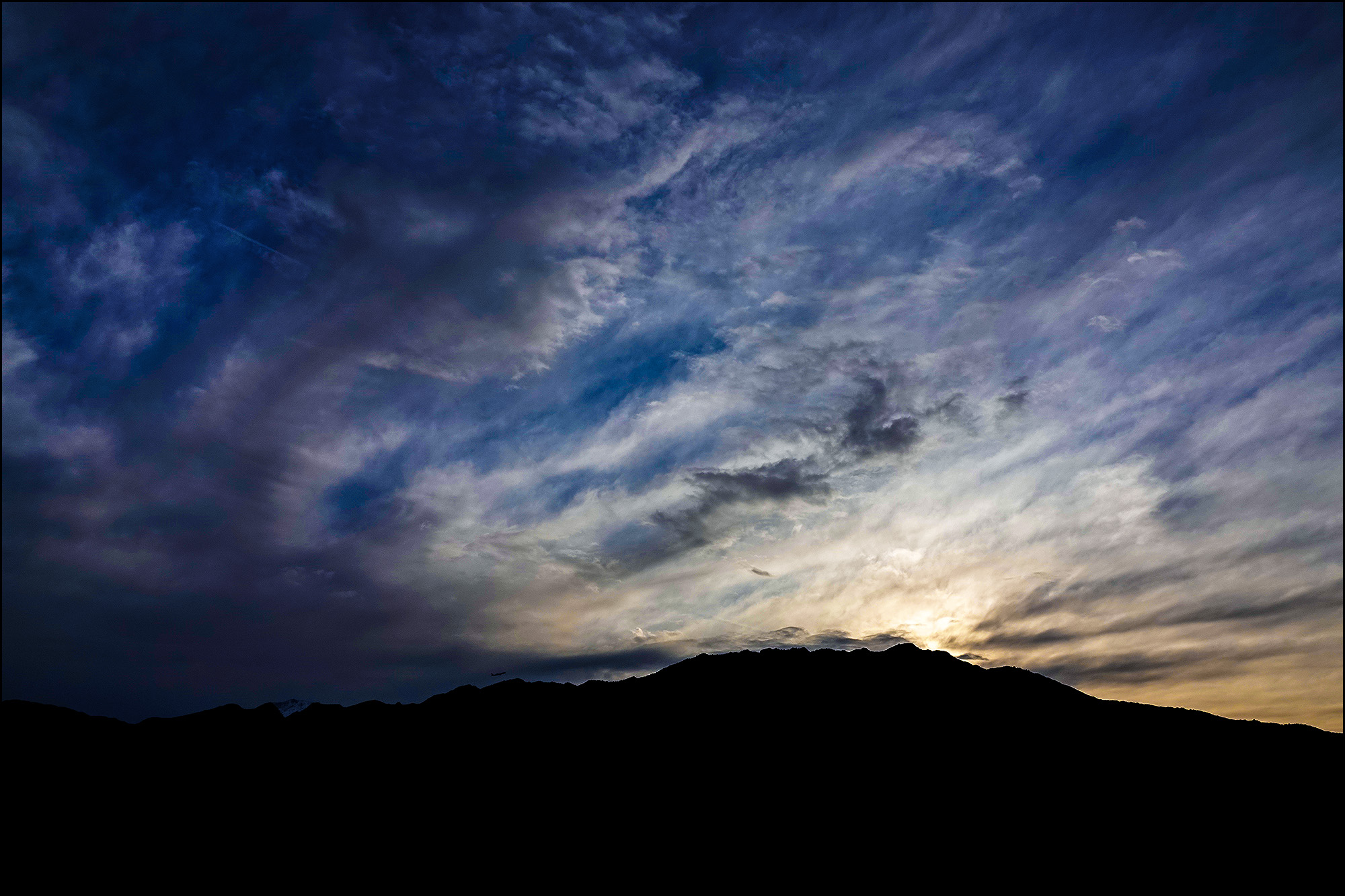


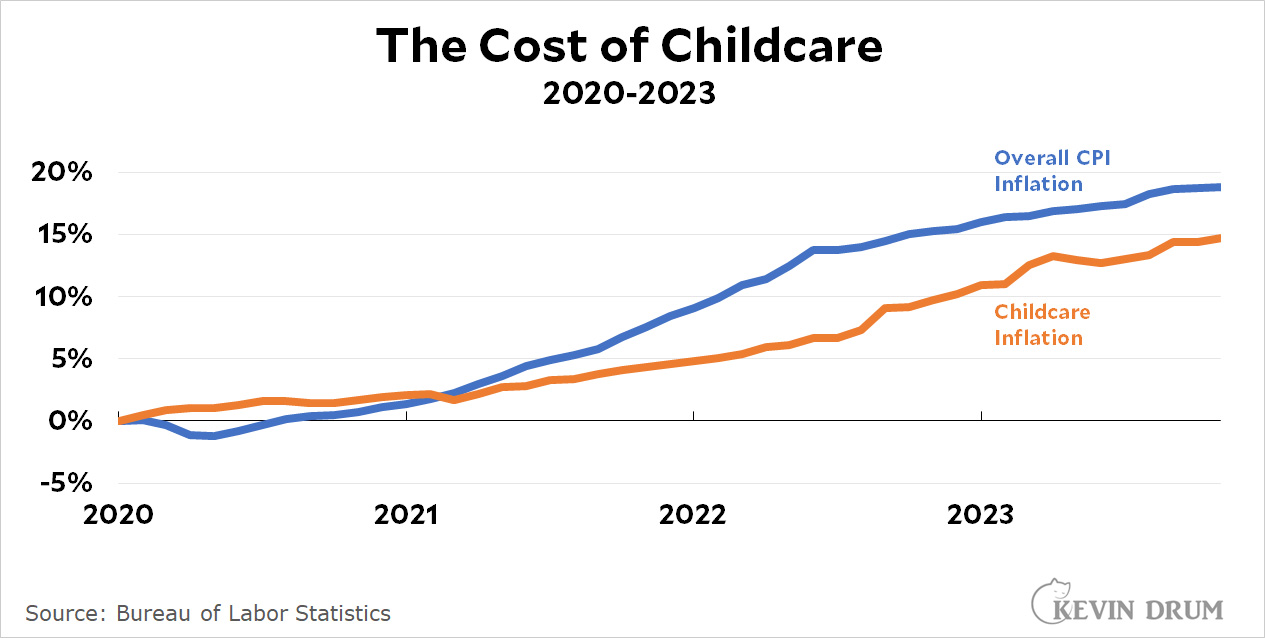
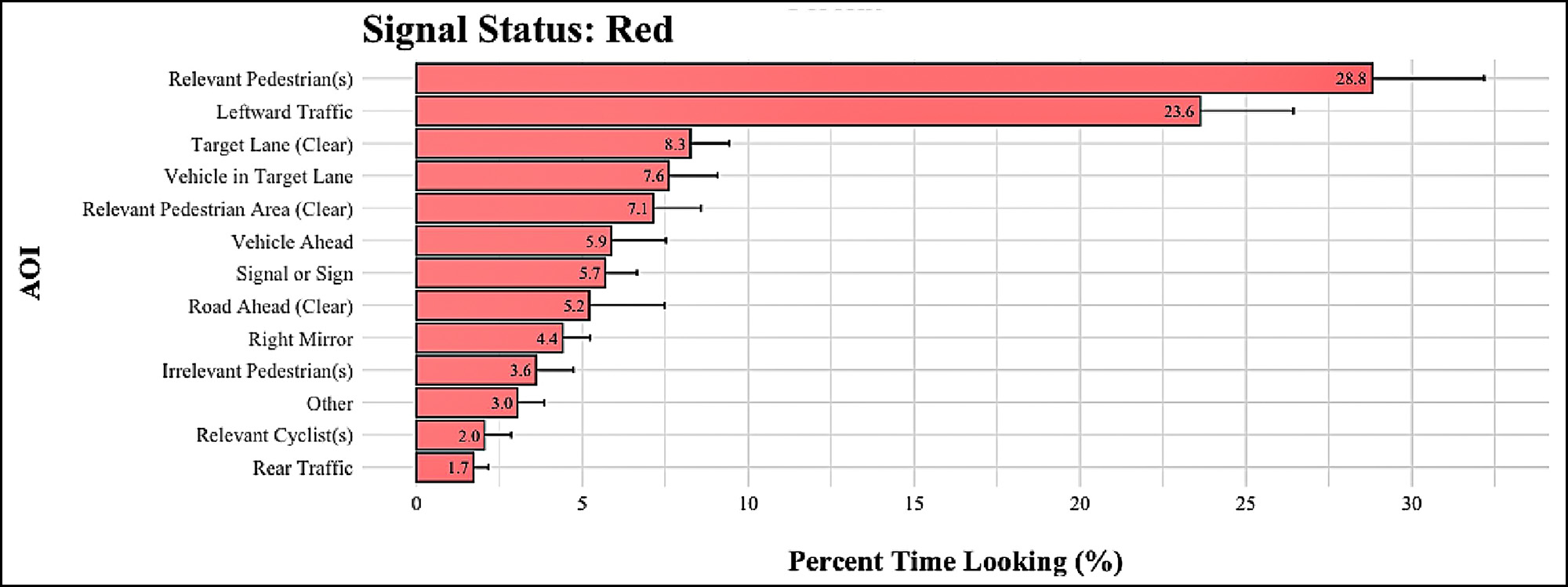 The largest share of attention among RTOR drivers is—surprise!—on pedestrians. If you add up all the attention generally aimed rightward it comes to about 60%. The researchers are plainly reluctant to admit this but they do tuck in the following:
The largest share of attention among RTOR drivers is—surprise!—on pedestrians. If you add up all the attention generally aimed rightward it comes to about 60%. The researchers are plainly reluctant to admit this but they do tuck in the following: